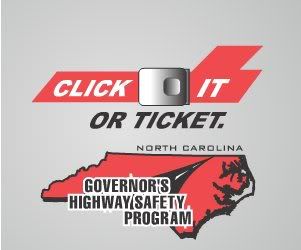The first day of school in Macon County is next Monday, August 26th. So, be on the lookout for slow moving school buses and for children on the side of the road.
Here is the law in North Carolina regarding when drivers are required to stop for school buses:
When a school bus is displaying its mechanical stop signal or flashing red lights and the bus is stopped for the purpose of receiving or discharging passengers, the driver of any other vehicle that approaches the school bus from any direction on the same street, highway, or public vehicular area shall bring that other vehicle to a full stop and shall remain stopped. The driver of the other vehicle shall not proceed to move, pass, or attempt to pass the school bus until after the mechanical stop signal has been withdrawn, the flashing red stoplights have been turned off, and the bus has started to move.If you see someone violating the North Carolina School Bus Law (NCGS 20-217), please download and use these documents after you have called *HP on your cell phone. Report of violation of School Bus Law (G. S. 20-217)
(MS Doc file) or (PDF file)
PRESS RELEASE
NORTH CAROLINA HIGHWAY PATROL
RALEIGH- As the school year begins, more than 700,000 students will be transported on school buses each day across North Carolina. Nationally, more than 450,000 public school buses travel about 4.3 billion miles a year to transport over 23.5 million children to and from school and school-related activities. Sadly, on the average five to six children are killed and about 5,500 are injured in school bus related accidents each year, according to the National Highway Traffic Safety Administration.
The most dangerous part of the school bus ride is when children get on and off the bus. Loading and unloading is where children are in the most danger of not being seen by the bus driver. Specifically, the area 10-feet in front of the bus where the driver may be too high to see a child; 10-feet on either side of the bus, where a child may be in the driver’s blind spot; and the area behind the bus. Many pedestrian fatalities in school-bus related crashes are children between 5 and 7 years old.
To prevent these needless deaths and injuries, drivers, children and parents are advised to follow a few simple safety tips:
Drivers
•When backing out of a driveway or leaving a garage, watch out for children walking or bicycling to school.
•When driving in neighborhoods with school zones, watch out for young people who may be thinking about getting to school, but may not be thinking of getting there safely.
•Slow down. Watch for children walking in the street, especially if there are no sidewalks in neighborhood.
•Slow down. Watch for children playing and congregating near bus stops.
•Be alert. Children arriving late for the bus may dart into the street without looking for traffic.
Learn and obey the school bus laws in your state. Learn the "flashing signal light system" that school bus drivers use to alert motorists of pending actions:
•Yellow flashing lights indicate that the bus is preparing to stop to load or unload children. Motorists should slow down and prepare to stop their vehicles.
•Red flashing lights and extended stop arms indicate that the bus has stopped, and that children are getting on or off. Motorists must stop their cars and wait until the red lights stop flashing, the extended stop sign is withdrawn, and the bus begins moving before they can start driving again.
Children
•Get to the bus stop at least five minutes before the bus is scheduled to arrive.
•When the bus approaches, stand at least three giant steps (6 feet) away from the curb, and line up away from the street.
•Wait until the bus stops, the door opens, and the driver says that it's okay before stepping onto the bus.
•If you have to cross the street in front of the bus, walk on the sidewalk or along the side of the road to a point at least five giant steps (10 feet) ahead of the bus before you cross. Be sure that the bus driver can see you, and you can see the bus driver.
•Use the handrails to avoid falls. When exiting the bus, be careful that clothing with draw strings, and book bags with straps don't get caught in the handrails or doors.
•Never walk behind the bus.
Walk at least three giant steps away from the side of the bus.
•If you drop something near the bus, tell the bus driver. Never try to pick it up because the driver may not be able to see you.
Parents
Teach children to follow these common sense practices to make school bus transportation safer.
Keeping our children safe takes teamwork and together we can make a difference!
For more information on North Carolina’s Stop Arm Law, please go to the following link: http://www.ncbussafety.org/SchoolBusSafety/SBSWlaw.html
For more information on Highway Safety, please contact First Sergeant Jeff Gordon at (919)733-5027 or Jeff.Gordon@ncdps.gov.































0 comments :
Post a Comment